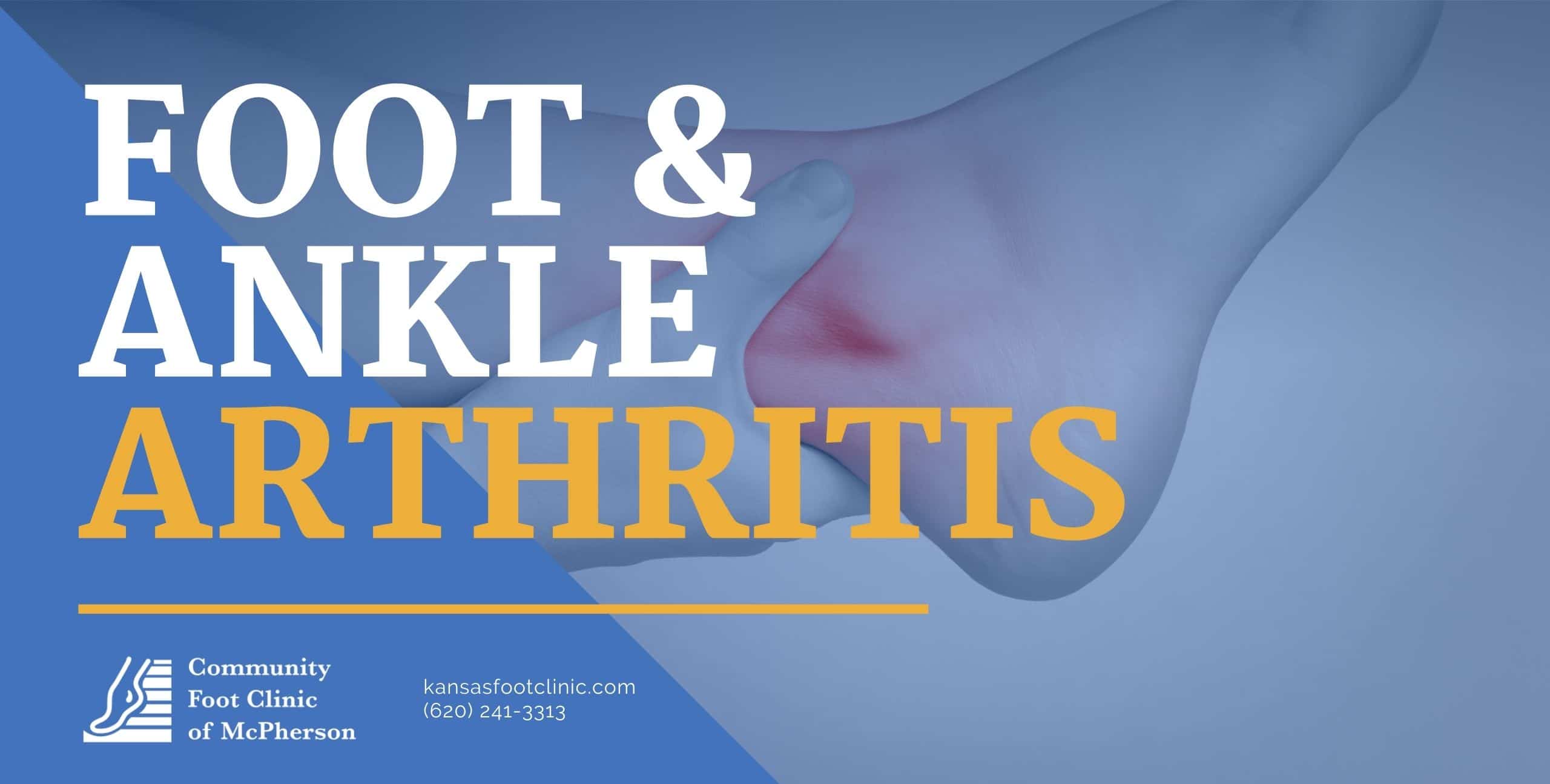Foot & Ankle Arthritis
Did you know that your feet contain almost 25% of all the bones in your entire body? That’s a lot!
It’s also a lot of joints—including many that are supposed to move, and many that aren’t but can become destabilized anyway.
With so many small bones coming together in many different ways, it’s no surprise that feet, ankles, and toes are commonly afflicted with arthritis. And unfortunately, foot and ankle arthritis can often be devastating.
For some, the discomfort comes with weather changes or strenuous activity. For others, it is always there, holding you back from what you want to do. But whatever the case may be, arthritis can change your life. Things you once enjoyed become too difficult to even consider when your joints are hurting.
Fortunately, you don’t have to let this condition control you! Many remedies exist that can substantially reduce your discomfort.

Types of Foot and Ankle Arthritis
“Arthritis” can refer to any kind of joint pain or inflammation, regardless of the cause. And there are many possible causes! Some of the most common types we see at our office include:
- Osteoarthritis. This is “wear and tear” arthritis that develops over time, as the cartilage meant to cushion the joint breaks down and the bones start to grind against one another. Severe osteoarthritis can cause a lot of pain and stiffness, and even lead to the growth of bone spurs.
- Post-traumatic arthritis. This is a form of osteoarthritis that develops as a direct consequence of a previous injury, such as an ankle sprain. Joints that have been injured can wear down faster and accelerate the onset of arthritis. (This can still happen several years after the initial injury.)
- Rheumatoid arthritis. Also known as RA, this is an auto-immune disease in which your body’s immune system begins to attack the tissues within your own joints. It can affect other areas of the body too, but joints in the feet are especially vulnerable.
- Gout. This is a form of inflammatory arthritis that triggers severely painful “gout attacks” due to the buildup of sharp uric acid crystals in the bloodstream. Eating a diet high in purines can trigger attacks. Although gout attacks can occur in joints throughout the body, the big toe is by far the most common location for the pain.
Relieving Painful Foot & Ankle Arthritis
While there is no known cure for most forms of arthritis, that does not mean symptoms cannot be managed and treated, nor does it mean you will be forced to live a life of pain and reduced activity.
Dr. Timson can evaluate your feet, pinpoint the troublesome joints where pain tends to be concentrated, and help you figure out what specifically is causing the pain—and why. He may need diagnostic images, such as from an X-ray or ultrasound, to get a clearer picture of the problem.
Depending on the location, severity, and cause of your arthritis, a number of treatment options may be considered. These might include, but are not limited to:
- Physical therapy. Various exercises can help alleviate tension, strengthen supporting tissues (ligaments, tendons, muscles), and help the joint resist further deterioration and damage.
- Medications. Minor aches and pains can often be dealt with by OTC pain medications. More severe discomfort might be best addressed via a cortisone shot, especially in cases of inflammatory arthritis (such as RA.)
- Lifestyle modifications. Making certain changes to your routine—for example, wearing more supportive shoes, losing weight, or switching to more low-impact exercises for your workouts—can help keep joint pain from spiking.
- Orthotics. If a structural foot issue or gait imbalance is contributing to increased wear and tear on specific joints, then an appropriate set of arch supports or custom orthotics can remove the source of the aggravation and help keep the damage from worsening.
- Surgery. If conservative treatments aren’t able to alleviate the pain or restore function to a satisfactory degree, we may consider a surgical option. This might include procedures such as debriding or “cleaning” a joint of bone spurs or damaged tissue, fusing a severely arthritic joint so that it can no longer move, or even replacing a joint with an artificial implant. The precise surgical plan recommended will of course depend on the condition, your health and activity level, and other factors.
The earlier you seek our help for joint pain in your feet and ankles, the more likely we will be able to help you keep the pain away and prevent further joint damage through nonsurgical treatments.
To request an appointment at any of our conveniently located Central Kansas offices, please call (620) 241-3313, or click the button below to use our online contact form.
McPherson Office
316 W. 4th Street
McPherson, KS 67460
P: (620) 241-3313
F: (620) 241-6967
© Community Foot Clinic of McPherson. All Rights Reserved.
Privacy Policy | Terms & Conditions
Web Design by CP Solutions
Marketed by VMD Services
